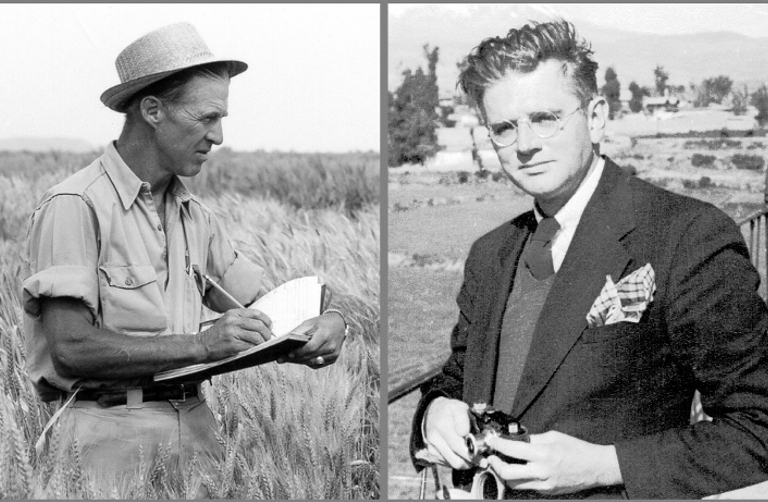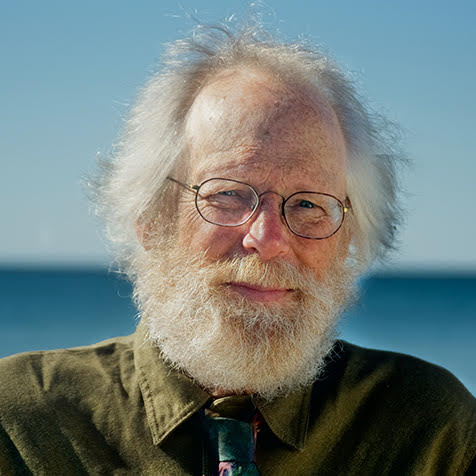A review of The Wizard and The Prophet
Charles C. Mann has written consecutive bestsellers of popular history writ large. His 1491 surveyed the civilizations of the pre-Columbian Americas, while 1493 looked at how post-Columbian America has affected the whole world.
The Wizard and the Prophet, by Charles C. Mann, 2018, 616 pages
The Wizard and the Prophet at first glance shows Mann at work on a smaller canvas, comparing the life’s work of two American scientists in the mid-20th century.
Though Norman Borlaug and William Vogt both studied agricultural resources their career trajectories could hardly have been more different. Mann uses the contrast as a framework for a sweeping discussion of the biggest environmental questions facing our generations.
In the process he transforms Borlaug into “The Wizard” and Vogt into “The Prophet’’, superheroes who have, in Mann’s telling, guided the two major currents in environmental thinking ever since. Thus “The Wizard” and “The Prophet” are tapped for analyses of subjects which, for all we know, neither Borlaug nor Vogt actually thought about.
Always lurking in the background are the questions with which Mann opens the book: is it possible to feed, clothe, and shelter 10 billion people on this planet, or are we moving towards inevitable environmental collapse?
The real Norman Borlaug was born to a poor Iowa farm family and he yearned to escape the backbreaking work in the fields. After earning a degree in plant pathology he found himself immersed in even more tedious manual labour in a dusty, eroded, wind-blown patch of dirt outside Mexico City. His goal was to find a variety of wheat that would resist the blight known as rust.
Borlaug planted eight thousand wheat varieties the first season and came up with exactly four rust-resistant varieties. But he eventually developed strains of “dwarf” wheat that not only resisted rust, but which did not blow over in the wind and which responded well to artificial fertilizers. This development became known as the “Green Revolution”, and earned Borlaug a Nobel Peace Prize. He continued to work nearly up to his death in 2009 at the age of ninety-five, with advocacy for genetic engineering a theme of his later writings.
William Vogt was publicly lionized long before Borlaug came to fame, yet he too did his key research in an unglamorous setting: the guano-caked islands off Peru’s coast. For half a century the nitrogen-rich excrement of Guanay cormorants had been a key resource for world agriculture. Peru’s government wanted to know: why did the population of cormorants sometimes crash, and could they safeguard the marvellous output of fertilizer?
While Borlaug’s work rewarded a rigorous focus on detail, Vogt approached his task with the wide-angle lens of ecology. He tied cormorant populations to the ups and downs of the anchovetas which fed the birds; the plankton which fed the anchovetas; and the alternately warm or cold ocean currents of El Niño or La Niña which fed or starved the plankton. The maximum numbers of cormorants as well as their periodic crashes, Vogt reported, were set by nature’s own limits, and it would be foolhardy to push against those limits.
Vogt extended this message of limits in his 1948 book Road to Survival. He believed too much consumption is ecologically disastrous, and this consumption is based on both population growth and the quest for continuing economic growth. Road to Survival was a runaway best-seller.
Trending to infinity
Mann’s story-telling skills shine when he’s narrating the life and times of Borlaug, Vogt and the colourful characters they worked with. When The Wizard and the Prophet embarks on a 200-page tour of today’s many global ecology challenges, Mann’s discursions are fascinating but the quality is uneven.
An overview of world agriculture contrasts the Green Revolution with small-scale “organic” approaches. Yet Mann winds up that chapter without posing an obvious question. The artificial fertilizers required by Green Revolution crops are based on an energy-intensive process with natural gas as a feedstock, but can we be confident we have affordable resources to maintain, let alone double, current fertilizer production?
Through most of the book Mann recognizes the value in Vogt’s arguments for limits as well as Borlaug’s success in at least temporarily pushing those limits. That even-handedness is gone in his chapter on energy supply. Responding to the fear that fossil fuel resources might soon run short, Mann espouses Cornucopianism with an enthusiasm that would make a tar-sands tycoon blush.
In Mann’s reading of history the mere thought of “peak oil” has produced such infelicities as 75 years of war and tyranny in the Middle East. Though in some mere physical sense fossil fuel reserves must be limited, Mann argues, they are economically infinite – and economics trumps physics. That may be “counterintuitive”, he admits, “but more than a century of experience has shown it to be true.” If a trend lasts 100 years, apparently, we should feel confident it will be sustained for all time.
His chapter on climate change has more grounding in science and reason, but is badly dated. He relies on the 2014 report of the Intergovernmental Panel on Climate Change, a necessarily conservative consensus review of thousands of reports published in prior years, which gave a likely range of global temperature increases from 1.5° to 4.5° Celsius.
Mann uses the IPCC’s temperature range and probability estimates to conclude “Very roughly speaking, this translates into a one-out-of-six chance that nothing much will happen – and a one-out-of-six chance of complete disaster.” When Stewart Brand used a similar one-in-six analogy in his 2009 book Whole Earth Discipline it was somewhat plausible. But since that time, measured global warming has been consistently outrunning the IPCCs cautious projections, many climatologists warn that we’ve already passed any chance of keeping global warming to less than 2°C, and the possible outcomes now run along a spectrum of biospheric and civilizational catastrophes.
Vogt’s 1948 Road to Survival was a bestseller, but by the mid-1960s he found it hard to get a hearing in major media. Borlaug’s 1970 Nobel Prize was the first of a series of accolades that continued for the next 40 years. (Photo of statue in US Capitol building by Architect of the Capitol)
While Borlaug was influential to the end of his long life Vogt’s career flamed out early. In the 1950s he turned to population control as the single overriding issue, leading to a stormy tenure at the helm of Planned Parenthood. Publishers and book buyers lost interest in his writings and he slid into despair. In 1968 – two years before Borlaug won his Nobel Prize – Vogt was gone, dead by his own hand.
Had he lived another fifty years to see 7 billion people trying to secure a subsistence on a planet already suffering from climate change, it’s hard to imagine that he would have regained hope.
Photos at top: Norman Borlaug in Mexico, 1964, photo from Centro Internacional de Mejoramiento de Maíz y Trigo. William Vogt, 1940, promotional photo from Compañia Administradora del Guano








